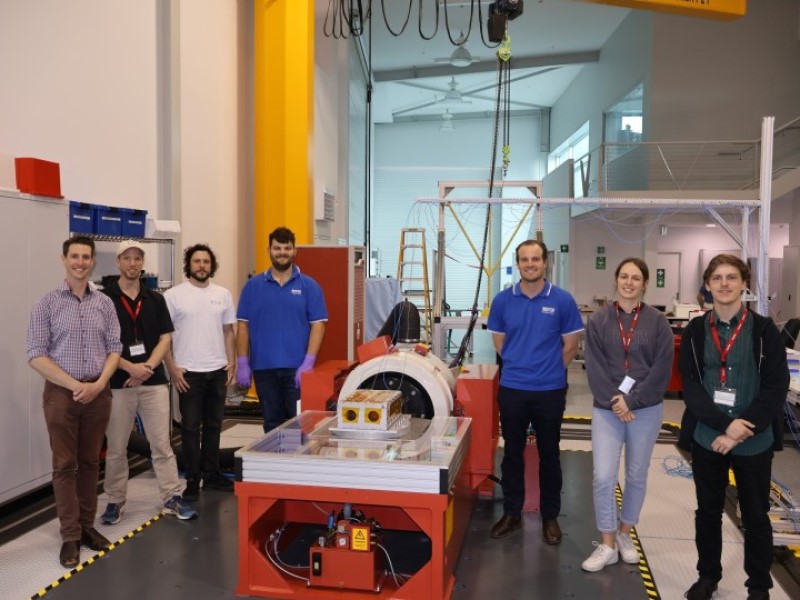The South Australian-made Kanyini cube satellite has reached its final manufacturing stage in the run up to its scheduled launch into low-Earth orbit in June.
Adelaide-based internet of things (IoT) business Myriota and nanosatellite producer Inovor Technologies are developing the project, with the SmartSat Cooperative Research Centre acting as the mission lead.
On Thursday, the state government announced that the satellite successfully completed environmental stress screening at the Australian National University’s National Space Test Facility, and completed its full system integration review.
The project is supported by $6.5 million of state government funding. Kanyini mission director Peter Nikoloff said in a statement that completion of these milestones achieves “one of our key goals for the mission – building the capacity of the Australian space industry and advancing the local expertise within the sector”.

Mr Nikoloff added that all of the satellite’s payloads are integrated and passed the rigorous environmental stress screening. Kanyini will be launched onboard SpaceX’s Transporter-11 mission from the Vandenberg Space Force Base in California.
The project proponents had initially targeted deployment by the end of 2022 but this was delayed due to a global shortage in electronic components and circuit boards. Inovor is manufacturing the satellite at its facility in Adelaide’s tech precinct Lot Fourteen
When in orbit, Kanyini will collect data to support decision-making on water use, climate policy, mining, and emergency management like tracking bushfire smoke.
The satellite bus used is Inovor’s 6U CubeSat, which is about the size of a shoebox and weighs just 12kg. Myriota’s IoT payload will enable the satellite to communicate with devices and sensors on Earth through its network.
It is also fitted with Dutch company Cosine’s Hyperscout 2 imager, an instrument that “combines hyperspectral and thermal imaging with high-level data processing and AI capabilities”, according to the manufacturer.
The payloads will support SmartSat capability demonstrator missions such as AquaWatch, which focuses on water quality monitoring, and I-in-the-Sky which focuses on disaster and climate change management.
Deputy Priemer and Minister for Innovation Susan Close said in a statement that Kanyini is demonstrating the capability an expertise of the South Australian space industry.
“The successful completion of this critical milestone brings us one step closer to realising our mission of seeing home grown South Australian space technologies launched into low Earth orbit,” Ms Close said.
“We are excited about the possibilities that Kanyini holds both in terms of building space heritage for South Australian space companies and the information it will provide to benefit our communities and services here in South Australia.”
The Kanyini update announcement follows a separate announcement earlier in the week from rival Adelaide-based nanosatellite producer Fleet Space Technologies. It successfully demonstrated the world’s smallest voice communications enabled satellite using technology developed through the SmartSat CRC.
South Australia released a Space Sector Strategy 2030, in 2020. It includes a goal to “support the development of many, small, connected satellites with disruptive approaches to design and technology”.
Do you know more? Contact James Riley via Email.

